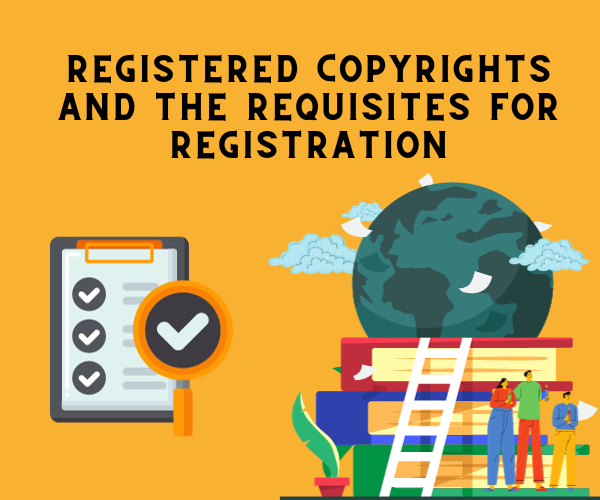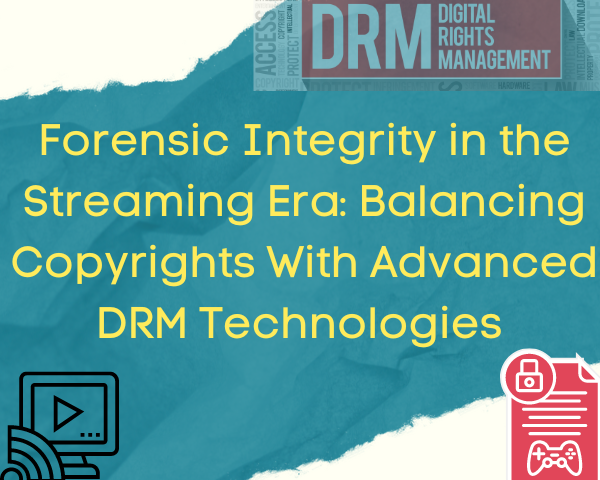Innovation, born of human creativity and critical thinking, is a testament to the immense effort and knowledge invested by individuals in the creation of meaningful works. Intellectual property stands as a tribute to such endeavors, with copyright emerging as a unique category within this realm. Copyright, defined as the exclusive right granted to the creator for their intellectual labor, holds significance in the legal domain.
According to Black’s Law Dictionary, copyright is acknowledged as a right in literary property, sanctioned by positive law. It represents an intangible, incorporeal entitlement bestowed upon the author or originator of literary or artistic creations, conferring upon them the exclusive privilege to reproduce, publish, and sell their work. Essentially, it safeguards against unauthorized use, reproduction, or imitation of the original creation.
Acting as a formidable shield, copyrights empower authors or owners to safeguard their works from unauthorized use by others. A diverse array of creative expressions falls under the purview of copyrights, including music, literary and dramatic works, sound recordings, artistic creations, cinematography, and more.
While copyright protection is inherent, it is noteworthy that the formal registration of copyrights provides additional advantages to the owner or author. In this article, we delve into the intricacies of these advantages and explore the requisite documentation necessary for the effective registration of copyrights.
What is Registered Copyright? How is it different from Unregistered Copyright?
Under copyright law, the owner or creator automatically receives copyright protection as soon as their work is created. However, the Copyright Act of 1999 includes a provision for the registration of copyrights, which is at the discretion of the creator. While registration is not mandatory, various court decisions have clarified that it does not inherently confer more rights, emphasizing its optional nature.
Despite both registered and unregistered copyrights offering protection, certain privileges are exclusively tied to registered copyrights. The advantages of registered copyrights over unregistered ones are evident:
- Public Record of Ownership: Registration serves as a public record, enhancing the authority and confirming ownership to the creator.
- Exclusive Rights: Registered copyright owners enjoy exclusive rights to reproduce, sell, and perform their original work more easily than those with unregistered copyrights. Registration affirms authenticity and provides exclusive access to the work.
- Clarity in Ownership Disputes: Over time, courts have faced challenges in adjudicating ownership and originality disputes. Copyright registration significantly reduces ambiguity in determining ownership and originality.
- Rights to Sue and Damages: Only registered copyright owners can file infringement suits. The registration certificate serves as prima facie evidence of ownership, simplifying the legal process. Registered owners can not only recover damages and profits from infringers but also claim statutory damages.
- Licensing Rights: Copyright owners have the right to license their work. Copyright registration allows anyone to confirm the true owner of the work, facilitating the licensing process. For exploiting one’s own work, copyright registration plays a pivotal role.
Conversely, unregistered copyright owners miss out on some of these advantages. The exclusive right to claim ownership is limited, and opportunities to monetize through licensing and assignment are restricted to registered copyrights. These factors impact ownership and hinder the ability to fully exploit one’s work. To ensure robust protection and the ability to capitalize on their creations, it is imperative for creators or owners to consider registering their work under Section 45 of the Copyright Act of 1999.
REQUISITES FOR COPYRIGHT REGISTRATION
Copyright Act provides for Registration under Section 45 of the Copyright Act 1999. The registration process enumerated here as follows.
To initiate the copyright registration process, the applicant must first create a registered user account. The new registration demands essential details such as the individual’s name, address, state, district, nationality, email ID, and phone number. Subsequently, the user is prompted to establish a unique User ID and Password, which will serve as their login credentials thereafter.
The Copyright Registration application is accessible via the Copyright Office. Registered users can log in using their unique credentials (Login ID and Password) and navigate to the application form by selecting ‘E-Filing of Application’.
The Copyright registration process entails four key steps, detailed as follows:
STEP 1 – FORM XIV
The initial step requires the applicant to provide essential details such as their information and communication address.
STEP 2 – STATEMENT OF PARTICULARS
In this step, the applicant specifies their interest in the copyright work, selecting from options like author, owner, publisher, composer, producer, or artist. Further details include the class and description of the work, such as literary/dramatic, artistic, cinematography, music, sound recording, or computer software. Additional information required encompasses the title of the work, language, author details, publication status, details of the first and subsequent publications, and information about licensees and assignees if applicable. For artistic works, additional details about possession, trademark registration, Design Act 2000 registration, and design registration eligibility are required.
STEP 3 – STATEMENT OF FURTHER PARTICULARS
This step involves answering yes/no questions related to the work to be registered, such as whether it is an original work, a translation or adaptation of a work in the public domain, or a translation or adaptation of a work with existing copyright. For translated or adapted works, additional details must be filled in.
STEP 4 – E-PAYMENT
The final step requires the applicant to make an online payment of the prescribed copyright registration fee.
Conclusion
Intellectual property stands as a beacon of economic development, with copyright serving as a crucial indicator. Copyright bestows upon the owner the right to their original expression, fostering the freedom to expand upon the ideas embedded in their work. While copyright registration is not obligatory, it emerges as a pivotal step to safeguard the work from unauthorized exploitation. Preventing others from using the original work, a product of the owner’s time and effort, demands affirmation, and registration stands as the foremost shield against potential infringements.
The advantages for the owner are manifold. Registration acts as irrefutable evidence in cases of infringement, streamlining the process of legal action against the infringer without the need to establish ownership from scratch. The act of publication ensures that the work is broadcast in the public domain, offering the owner a sense of security. Furthermore, a registered copyright opens avenues for generating income through distribution, licensing, or assignment.
In conclusion, the registration of copyright brings forth a plethora of benefits that owners should not overlook. It provides tangible proof, legal recourse, and economic opportunities, making it a wise and prudent choice for any creative work owner.




